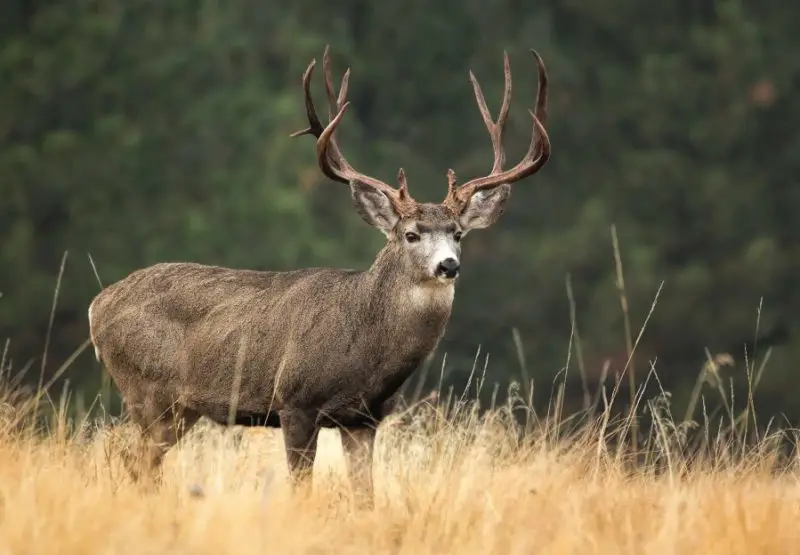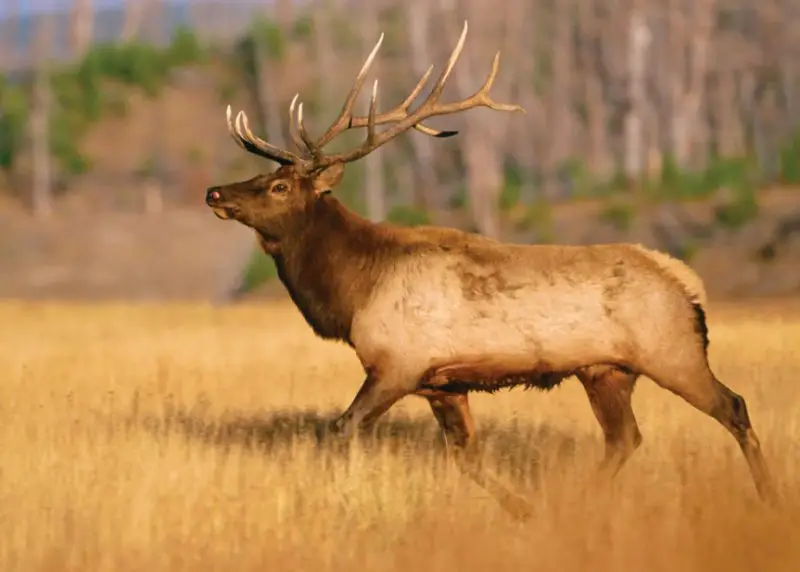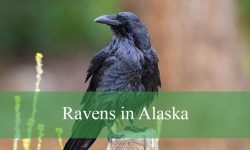Montana’s wide-ranging terrain, from open plains to mountainous regions, provides perfect habitats for several deer species. Each species differs in size, appearance, and preferred environment, giving them distinctive characteristics.
From the commonly seen Mule Deer to the elusive White-tailed Deer and the majestic Elk, Montana’s deer populations are a fascinating study in adaptation and survival. Observing them in their natural habitat can reveal intriguing behaviors, seasonal movements, and feeding patterns.
With increasing interest in wildlife conservation and outdoor recreation, knowing how to identify and differentiate these deer is more important than ever.
This guide highlights the key deer species in Montana, including identification tips, habitat preferences, and interesting facts.
Mule Deer (Odocoileus hemionus)

Characteristics
Mule Deer are among the most widely recognized and abundant deer species in Montana. Their name comes from their unusually large, mule-like ears, which are not only striking in appearance but also highly functional, providing acute hearing to detect predators and environmental sounds.
The coat of a Mule Deer shifts seasonally. In winter, it is a muted grayish-brown that blends seamlessly with leafless forests and snowy landscapes. In summer, it becomes a rich reddish-brown, helping them stay camouflaged in sunlit meadows and grasslands.
Adult males, or bucks, grow impressive antlers with a distinct bifurcated (forked) pattern, often with multiple points on each antler. These antlers shed annually and regrow, reaching their peak size typically in prime-age bucks. Bucks also have a muscular neck and chest, which are essential for sparring during the rut.
Identification
Mule Deer are easily distinguished from other deer species by a combination of physical traits. Their signature black-tipped tail, long slender legs, and prominent ears make them instantly recognizable.
Unlike White-tailed Deer, Mule Deer have forked antlers rather than a single main beam with points projecting from it. They are generally larger and more robust, with adult bucks weighing between 130 to 220 pounds and does ranging from 95 to 150 pounds. Their facial features include a more angular nose and a subtle dark stripe running down the forehead.
When observing them in the wild, their bounding gait—often described as a “stotting” or “pronking” leap—is another key identification marker.
Habitat and Behavior
Mule Deer are highly adaptable and occupy a range of habitats across Montana, from open grasslands and foothills to dense forested valleys.
They are crepuscular, meaning they are most active during the cooler periods of dawn and dusk, which helps them avoid predators and the heat of midday. Their diet is varied, including shrubs, grasses, forbs, and even tree bark during harsh winters.
Seasonal migrations are common, with Mule Deer moving to higher elevations in the summer to feed on abundant vegetation and descending to lower valleys in the winter for shelter and forage. They are often solitary or travel in small groups, with larger herds forming outside the breeding season. Bucks engage in antler battles during the rut, establishing dominance and access to mates.
Fun Fact
Mule Deer are remarkable athletes. Their powerful legs allow them to leap up to 10 feet high and cover long distances in a single bound, making it easier to escape predators such as coyotes, mountain lions, and wolves.
In addition, their large ears can rotate independently to pinpoint sounds, giving them an almost 360-degree auditory awareness. This acute hearing is a critical survival adaptation in Montana’s diverse and often rugged landscapes.
White-tailed Deer (Odocoileus virginianus)

Characteristics
White-tailed Deer are slightly smaller and more slender than Mule Deer, making them appear more delicate in the wild. Their coat changes seasonally, with a reddish-brown hue during the summer and a gray-brown shade in winter, allowing them to blend with different environments.
One of their most distinctive features is the white underside of their tail. When threatened, they raise and flash it as a warning signal to other deer nearby. Adult males, or bucks, grow antlers that extend forward with multiple tines. These antlers differ from Mule Deer in structure, as they usually have a single main beam with points projecting upward rather than forked antlers.
Identification
The most noticeable identification feature of White-tailed Deer is their tail. When alarmed, the white flash is instantly recognizable and serves as an effective communication tool. Compared to Mule Deer, White-tailed Deer have smaller ears, a narrower face, and a more delicate body structure.
Adult bucks generally weigh between 120 and 180 pounds, while does range from 90 to 140 pounds. Observers can also note their graceful, bounding gait and agile movements, which help them navigate dense forested habitats.
Habitat and Behavior
White-tailed Deer prefer habitats that offer ample cover, such as forested areas, river valleys, and agricultural lands. They tend to stay closer to edges and dense vegetation, which provides safety from predators while allowing access to food sources.
Their diet is highly varied. They feed on leaves, twigs, fruits, nuts, and agricultural crops, adapting their foraging behavior to seasonal availability. White-tailed Deer are primarily crepuscular, with peak activity occurring in the early morning and late evening. During the day, they often rest in shaded areas or dense thickets to avoid heat and predators.
Unlike Mule Deer, White-tailed Deer are more social and may form small family groups consisting of does and fawns, while bucks tend to be solitary outside the breeding season.
Fun Fact
White-tailed Deer are strong swimmers, capable of crossing rivers, lakes, and wetlands to escape predators or explore new territories. Their agility both on land and in water makes them highly adaptable and resilient across a wide range of Montana habitats.
Elk (Cervus canadensis)

Characteristics
Elk are members of the deer family but are significantly larger than both Mule Deer and White-tailed Deer. Adult bulls can weigh up to 700 pounds, making them one of the most imposing ungulates in Montana. Their coats range from light tan to dark brown, providing effective camouflage in meadows, forests, and mountain slopes. A distinctive feature of Elk is their pale rump patch, which is visible even from a distance and helps with identification.
Bulls grow impressive antlers that can span up to four feet and are used during mating displays and sparring matches. These antlers are shed annually and regrown each year, often increasing in size and complexity as the bull matures. Cows are smaller and lack antlers, exhibiting more subdued coloring.
Identification
Elk are easily distinguished by their massive size, long necks, and large, branching antlers. Adult bulls tower over other deer species, making them unmistakable in the wild.
The antlers of bulls have multiple tines branching out from a main beam, and new antlers are grown every year after the previous set is shed in late winter. Their vocalizations, body posture, and herd behavior also serve as identifying traits, with bulls often standing tall and alert, especially during the rut.
Habitat and Behavior
Elk inhabit a wide range of habitats in Montana, including forests, alpine meadows, and open valleys. In some regions, they are migratory, moving to lower elevations during the harsh winter months to find accessible forage.
Their diet is herbivorous and highly varied, consisting of grasses, shrubs, leaves, and tree bark, depending on seasonal availability. Elk are social animals, typically forming large herds, particularly in winter, which provides protection against predators and helps with resource finding. During the summer, herds may split into smaller groups, with bulls often roaming separately outside the breeding season.
Elk are primarily active during the early morning and late evening hours but can also be seen foraging during the day in areas with low human disturbance.
Fun Fact
Elk are famous for their bugling calls during the mating season. These high-pitched calls can carry up to two miles, serving to attract cows and warn rival bulls. The bugle is a unique and haunting sound that is one of the most iconic aspects of North American wildlife.
Comparison of Three Deer Species in Montana
Feature |
Mule Deer (Odocoileus hemionus) |
White-tailed Deer (Odocoileus virginianus) |
Elk (Cervus canadensis) |
|---|---|---|---|
Size (Adult Buck) |
130–220 lbs |
120–180 lbs |
Up to 700 lbs |
Size (Adult Doe) |
95–150 lbs |
90–140 lbs |
500–600 lbs |
Antlers |
Forked, bifurcated branches |
Single main beam with multiple tines, pointing forward |
Large, branching, multi-tined, shed annually |
Tail |
Black-tipped, medium length |
White underside, flashed as warning |
Light-colored rump patch, visible from distance |
Ears |
Large, mule-like |
Smaller, more delicate |
Medium-sized, proportionate to head |
Coat Color |
Grayish-brown in winter, reddish-brown in summer |
Reddish-brown in summer, gray-brown in winter |
Light tan to dark brown, pale rump patch |
Body Build |
Robust, longer legs |
Slender, more delicate |
Massive, long-necked, muscular |
Habitat |
Foothills, grasslands, forested valleys |
Forest edges, river valleys, agricultural areas |
Forests, meadows, mountains; migratory in winter |
Behavior |
Crepuscular; seasonal migration; solitary or small groups; bucks spar during rut |
Crepuscular; stays near cover; small family groups; bucks mostly solitary |
Social; forms large herds in winter; migratory; active early morning/late evening |
Diet |
Shrubs, grasses, forbs |
Leaves, twigs, fruits, crops |
Grasses, shrubs, tree bark |
Fun Fact |
Excellent jumpers; ears rotate independently for 360° hearing |
Strong swimmers; can cross rivers and lakes |
Known for bugling calls that can carry up to 2 miles |
FAQs About Deer in Montana
What Types of Deer Live in Montana?
Montana is home to three main deer species: Mule Deer, White-tailed Deer, and Elk. Each species has unique physical traits and habitat preferences.
When Is the Best Time to See Deer in Montana?
Deer are most active during dawn and dusk. Seasonal migrations and mating periods in fall provide excellent viewing opportunities.
Are Mule Deer and White-tailed Deer Different?
Yes. Mule Deer have larger ears, forked antlers, and black-tipped tails, while White-tailed Deer have smaller ears, forward-growing antlers, and white tails.
Where Are Elk Found in Montana?
Elk prefer forested areas, mountain meadows, and river valleys. Large herds can be seen in Yellowstone National Park and western Montana.
Do Deer in Montana Migrate?
Yes. Mule Deer and Elk often migrate seasonally to access better forage and avoid harsh winter conditions, while White-tailed Deer tend to have smaller ranges.
Final Thoughts
Montana’s deer species are fascinating examples of adaptation to diverse landscapes. From the agile Mule Deer to the alert White-tailed Deer and the majestic Elk, each species contributes to the state’s rich wildlife diversity. Observing these animals in their natural habitats provides insight into their behaviors, migrations, and ecological importance. Whether you are hiking, hunting, or simply enjoying Montana’s outdoors, understanding these deer can greatly enhance your experience.






